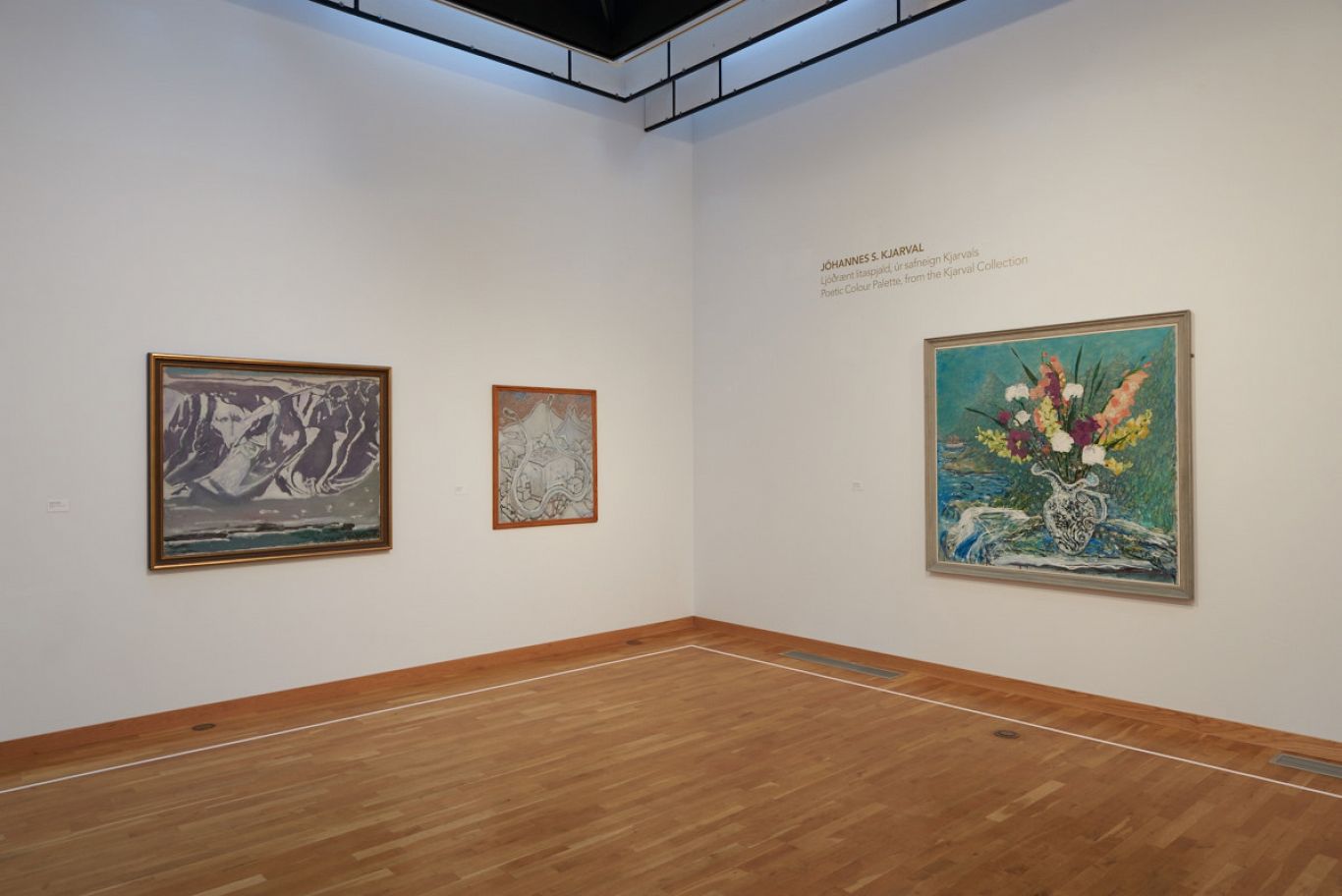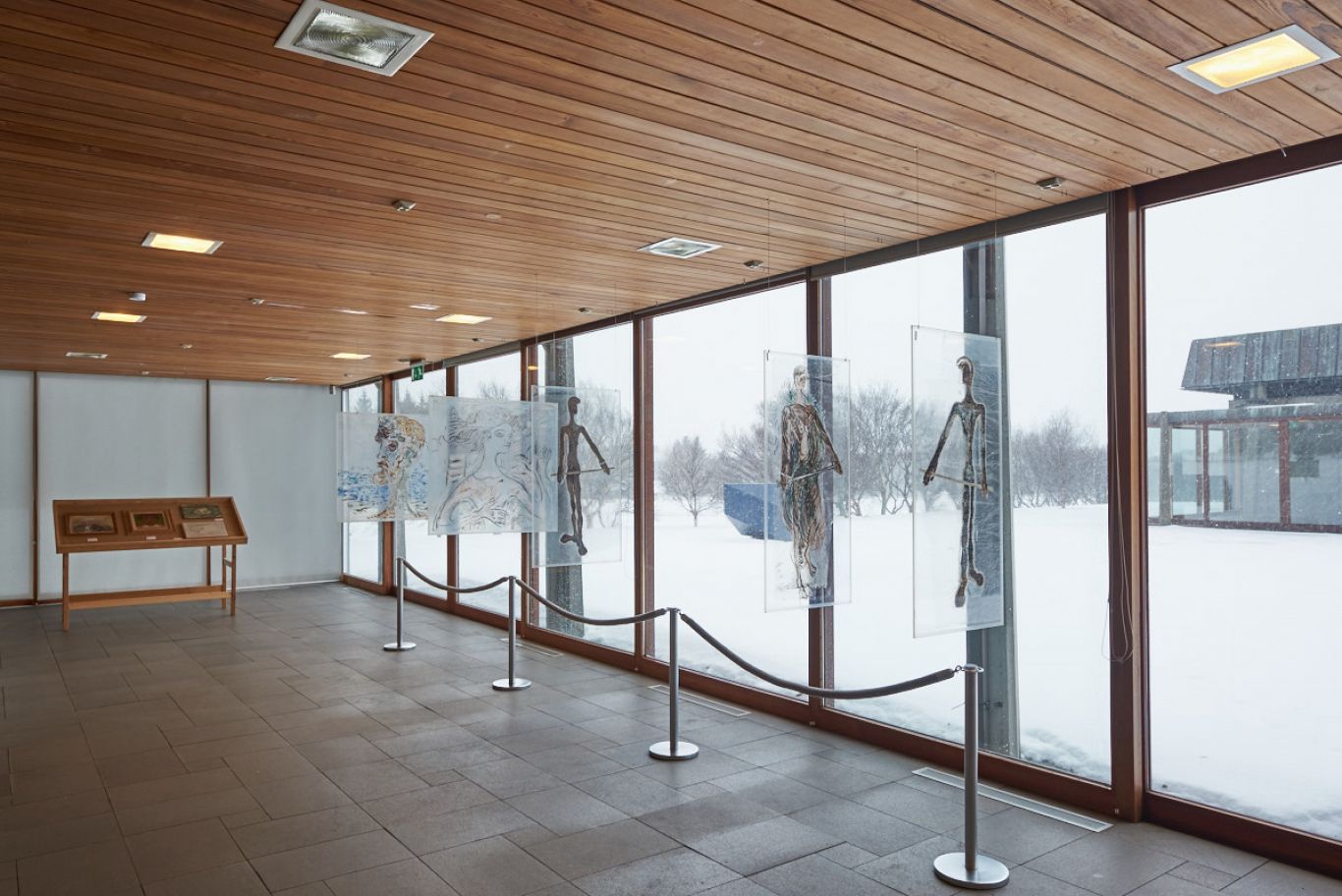Choose year
Poetic Colour Palette, from the Kjarval collection
Jóhannes Sveinsson Kjarval occupies a special place in the history of Icelandic culture and art, as one of the country’s most beloved artists, before or since. Born in 1885, he was a native of the south coast, from the farm Efri-Ey in the Meðalland district, but was raised by relatives on the east coast at Geitavík in Borgarfjörður-eystri. In his early twenties he assumed the royal Irish name Kjarval and used it to his dying day. He set off for Reykjavik in 1902; only two years prior, Iceland’s first exhibition of paintings had been mounted by painter Þórarinn B. Þorláksson. In Reykjavík Kjarval took drawing and painting courses with Þorláksson and also with the painter Ásgrímur Jónsson, but his mind was set on going abroad for further studies in art.
In 1911 he traveled first to London and then to Denmark, where he began his formal study of art. Kjarval graduated from the Royal Danish Academy of Fine Arts in Copenhagen in 1917 and in 1922 moved back to Iceland, bringing his family, a wife and two children. His family headed back to Copenhagen not many years later and from that time on he lived alone.
Kjarval was a legend in his own time; to many people he personified the romantic artist. Though his roots lay in the Icelandic farming community, his life and artistic creation were inextricably bound to the cultural restoration of Iceland and the independence struggle of the first half of the twentieth century. His works bear witness to a new vision of nature; some say that through his landscape paintings he taught Icelanders to value the unique beauty residing in the lava and moss that adorn the countryside. Through these works people arrived at a new experience of Iceland’s natural world and the fantasyland that may be found in its landscape.
Kjarval traveled widely in Iceland to paint, sometimes spending days or even weeks in the countryside. His works from the east coast and Snaefellsnes are well-known; he also painted a great deal at Thingvellir and in the vicinity of Reykjavik.
Kjarval’s subject matter falls into three main groups: landscapes, portraits, and fantasies or works of imagination. These often overlap, however, so that all three kinds of image may be found in the same canvas. The exhibition includes also drawings that Kjarval made on transparent plastic or acrylic sheets. These drawings are on view for the first time.
Kjarval left behind a large oeuvre that is by any account one of the more significant pieces of the Icelandic nation’s cultural heritage. He bequeathed a portion of his artworks and his personal effects to the city of Reykjavik in 1968. Works from his bequest were first displayed at the opening of Kjarvalsstaðir in 1973. Since then, the museum’s collection has steadily and substantially increased, both through museum purchases and a host of priceless individual donations.
Kjarval died in 1971, at the age of eighty-six.
Click on the pictures to view some more on Instagram and post your own by using the #hashtag of the exhibition.
Remember to follow Reykjavík Art Museum on @reykjavikartmuseum.




